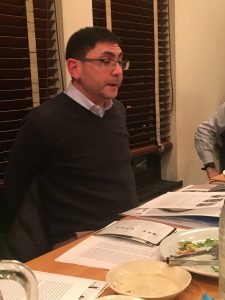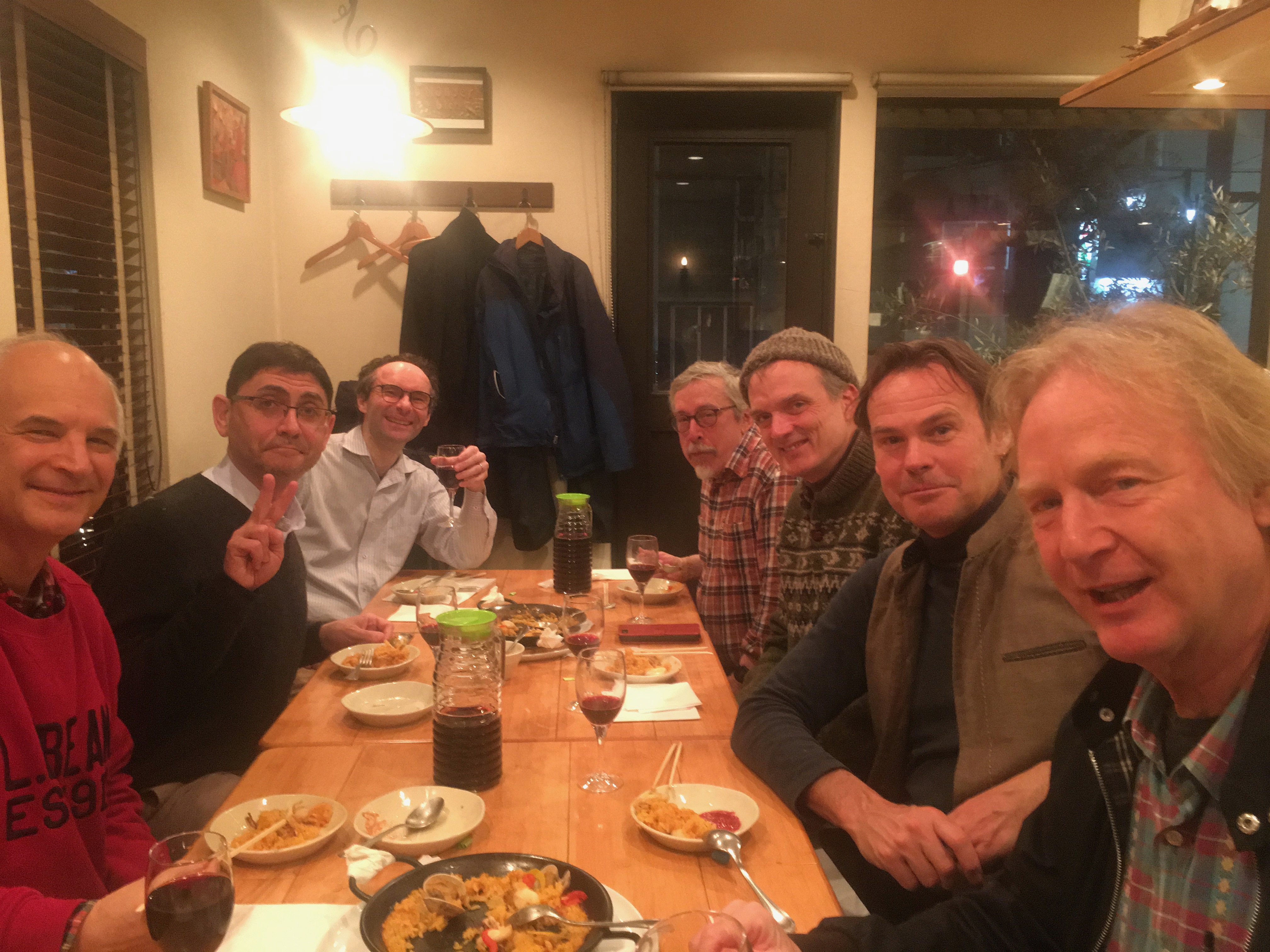
At a dinner talk on March 3, Micah Auerback introduced us to research he is doing on the first outreach by Zen practitioners in Japan to Western foreigners. Currently on sabbatical from the University of Michigan, Micah is a specialist in Japanese religion and author of A Storied Sage, about the changes in depictions of the historical Buddha in Japan.
On this occasion Micah told us of the events at Enpuku-ji in the city of Yawata in the 1930s. Apparently the idea to reach out to foreigners was the brainchild of the head priest, Kozuki Tesshu (1879-1937), former abbot of Myoshin-ji, who believed in spreading Zen to Westerners by giving them a feel for the religion without subjecting them to the kind of rigorous regime demanded of Japanese. Western beds, for example, along with Western food and comforts. Although Kozuki did not speak English, he was aided by Ogata Sohaku (1901-73) who did, and who was attached to Shokoku-ji.
In an article of 1935, Ogata wrote of two types of Westerners with an interest in Zen. The first group were motivated by disillusionment with Christianity, prompting Ogata to note that Buddhism was a superior and more rational religion. Other Westerners were said to be motivated by a love of the Orient, and Ogata has some cutting remarks about them…
For people of this variety, simply to visit a Zen temple, far from the dust of the world, is itself already a great joy, and they feel limitless satisfaction at having a cup of tea with a Zen monk who wears rough garments on his body, but who dons silk in his mind. Sitting together with unsui, [practitioners of Zen] silent in a soundless hall, they come to feel as if they too have renounced the world, and when they walk through the spotlessly swept gardens of the training temple, they feel just as if they have transformed into a figure in an ink-painting… To arrange soup, bread, and butter on the dining table – and when it’s time for the meal, to hear the calm sounds of the sutra – is, they say, much more introspective and noble than beginning a dinner party with music in the Western style. Thus what these people want seems to be a lifestyle and a mode of sensibility that are purely Oriental…. while we are evaluating whether Westerners could possibly understand Zen, a letter arrives from their homelands, written by a blue-eyed foreign monk who wears a haori jacket and sits on tatami, saying “Amongst the Japanese I think that the unsui in the training hall and the geisha girls are the most impressive. They are always alert and on guard everywhere.”
The provision of a hostel for Westerners at Enpuku-ji provoked a short news item in the New York Times, noting that it had been ‘specially built for foreign comfort’ with electric heaters, running water and foreign plumbing. It also noted that the sermons of head priest Kozuki would be translated by Daisetsu Suzuki, who had lived in the US and had an American wife.
Among the copious handouts Micah kindly presented the group with was a fascinating list of contents for a yearbook published by the Osaka Mainichi for 1932-33. Amongst such featured items as ‘Olympic [sic] and Japan’, ‘Japanese Women as Lawyers’, and ‘Geisha Becoming Dance Minded’ is a full page article on a ‘Zen Hospice’ with the subtitle ‘Unique Attempt in Japan to Propagate Zen Teaching Among Foreign Devotees’. One of the most striking items is a picture of the Meditation Cave, which summons up thoughts of asceticism and Bodhidharma. In fact the cave was specially built for the exclusive use of foreign students with consideration for their comfort and fitted with tatami and heating.
Micah tells us he still has loose ends to follow up before he completes his picture of what went on exactly, and that eventually his research will end up in an article or articles about the Enpuku-ji experiment. We look forward to seeing the result and reading more of this intriguing tale.

